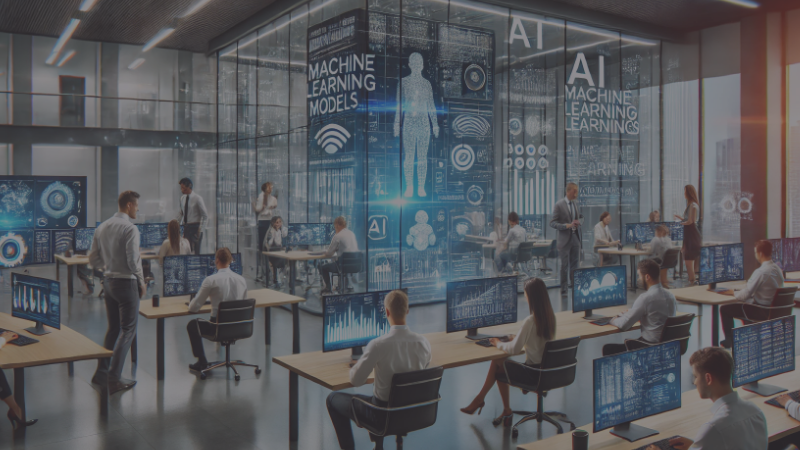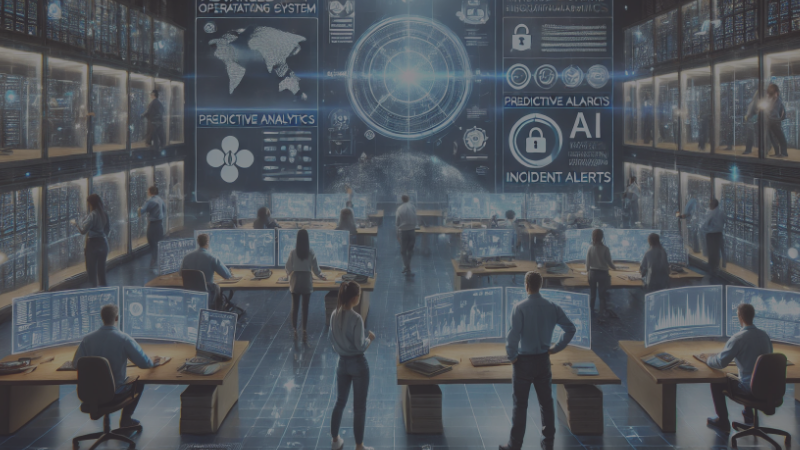Imagine this: a university administrator walks into a packed meeting room, where discussions about the institution’s digital future dominate the agenda. Everyone agrees—digital transformation is essential to remain competitive, attract top-tier students, and improve learning outcomes. Yet, despite ambitious goals and increased technology investments, the path forward seems unclear. Challenges keep surfacing: legacy IT systems that can’t keep up, faculty reluctant to adopt new teaching tools, and concerns over cybersecurity. Sound familiar?
For universities, digital transformation isn’t just a buzzword—it’s a necessity. In a rapidly evolving educational landscape, where hybrid learning and personalized education are becoming the norm, institutions must adapt or risk falling behind. However, embarking on this transformation is easier said than done. From legacy infrastructure to budget constraints, universities face unique hurdles that require careful planning and innovative solutions.
In this post, we’ll dive deep into the key challenges that universities encounter during their digital transformation journeys and explore practical strategies for overcoming them. Whether you’re a CIO tasked with leading IT modernization or an administrator seeking to improve student outcomes, this guide will help you navigate common pitfalls and build a sustainable digital strategy.
Challenge #1: Legacy Infrastructure and Systems
Many universities operate on outdated IT systems that were built decades ago. These legacy systems—whether it’s an old student information system (SIS) or an on-premises learning management system (LMS)—struggle to support modern capabilities like cloud integration, real-time data analytics, and personalized learning environments. The result? Bottlenecks in service delivery, higher maintenance costs, and limited agility in adopting new technologies.
Solution: Phased Upgrades and Cloud Migration
Rather than attempting a full-scale replacement, universities can take a phased approach to upgrade their infrastructure. Start by modernizing mission-critical systems—such as SIS and LMS—that directly impact student experience.
- Phased Modernization: Break down large IT overhaul projects into manageable phases, reducing disruption while ensuring continuous improvements.
- Cloud Migration: Moving systems to cloud-based platforms offers scalability, improved security, and cost savings. Cloud solutions also facilitate better collaboration, as students and staff can access resources from anywhere.
Case in Point: Arizona State University transitioned to a cloud-native LMS, enabling faster updates, seamless scalability, and enhanced data analytics capabilities, significantly improving both user experience and IT efficiency.
Challenge #2: Resistance to Change Among Faculty and Staff
Resistance from faculty and staff is a common roadblock in digital transformation. Many educators worry that new technology will increase their workload, disrupt their teaching style, or prove less effective than traditional methods. Without faculty buy-in, even the most advanced digital initiatives can fall flat.
Solution: Comprehensive Training and Faculty Involvement
- Training Programs: Offer tailored workshops, webinars, and one-on-one sessions to familiarize faculty with new tools.
- Incentives for Early Adoption: Recognize and reward faculty who embrace new technologies, whether through stipends, reduced workloads, or professional development opportunities.
- Faculty Involvement: Involve faculty early in the selection and implementation of digital tools. When educators feel they have a voice, they’re more likely to champion new initiatives.
Pro Tip: Create a group of faculty tech ambassadors—early adopters who can mentor their peers and share success stories, fostering a culture of collaboration and innovation.
Challenge #3: Ensuring Data Security and Privacy
As universities digitize more processes, they become prime targets for cyberattacks. Sensitive data—ranging from student records to research findings—must be protected at all costs. A single breach can have severe consequences, including reputational damage, financial loss, and legal repercussions.
Solution: Strengthening Cybersecurity and Data Governance
- Robust Cybersecurity Infrastructure: Implement multi-layered security measures, including multi-factor authentication (MFA), end-to-end encryption, and regular vulnerability assessments.
- Data Governance Frameworks: Establish clear policies on data usage, storage, and access. Ensure compliance with regulations like FERPA (in the U.S.) and GDPR (in the EU).
- Awareness Campaigns: Educate students, faculty, and staff about cybersecurity best practices through ongoing awareness campaigns.
Did You Know? According to EDUCAUSE, over 75% of higher education institutions experienced phishing attacks in the past year, underscoring the critical need for robust cybersecurity.
Challenge #4: Budget Constraints
Digital transformation can be expensive. Between upgrading infrastructure, purchasing software licenses, and training staff, costs can quickly add up. For universities already facing tight budgets, finding the necessary funds can be a daunting task.
Solution: Prioritizing ROI and Seeking Partnerships
- Focus on High-Impact Projects: Prioritize projects that deliver measurable ROI, such as improving student enrollment processes or automating administrative tasks to reduce costs.
- Public-Private Partnerships: Collaborate with technology providers, government agencies, and philanthropic organizations to fund digital initiatives.
- Demonstrating Long-Term Value: Build a compelling business case that emphasizes long-term benefits, such as enhanced student satisfaction, improved learning outcomes, and operational efficiency.
Example: The University of Texas partnered with Dell Technologies to deploy a smart campus initiative, using IoT devices and real-time data analytics to improve energy efficiency and reduce costs.
Challenge #5: Digital Equity and Inclusion
Digital transformation should enhance learning for all students, but not everyone has equal access to technology. Students from underprivileged backgrounds may lack reliable internet access or personal devices, creating a digital divide.
Solution: Promoting Accessibility and Equity
- Affordable Access Programs: Launch initiatives to provide low-cost or loaner devices and subsidized internet access for students in need.
- Accessible Platforms: Ensure all digital platforms comply with accessibility standards like WCAG to support students with disabilities.
- Continuous Feedback: Collect feedback from students regularly to identify and address gaps in digital access.
Best Practice: Georgetown University implemented a device loan program during the COVID-19 pandemic, ensuring that students from low-income families could continue learning remotely.
The Future of Digital Transformation in Higher Education
Overcoming these challenges opens up exciting possibilities for universities. Imagine:
- AI-Powered Learning Analytics: Real-time insights into student performance enable personalized learning paths.
- Virtual and Augmented Reality: Immersive technologies transform disciplines like medicine, engineering, and the arts.
- Smart Campuses: IoT-driven campuses optimize energy usage, enhance security, and improve overall student experience.
However, digital transformation isn’t a one-time project—it’s a continuous journey. Universities must stay agile, keep up with emerging technologies, and foster a culture of innovation to thrive in the long term.
Conclusion
Digital transformation in higher education is no small feat, but the rewards are worth the effort. By addressing challenges like legacy infrastructure, faculty resistance, cybersecurity risks, budget constraints, and digital equity, universities can create a more inclusive, efficient, and innovative learning environment.
For CIOs and administrators, the key is to take a strategic, phased approach—prioritize high-impact areas, engage stakeholders, and focus on long-term value. Remember, digital transformation isn’t about adopting the latest technology for its own sake; it’s about enhancing student experiences, improving operational efficiency, and future-proofing the institution.
Ready to take the first step? Start by evaluating your current digital maturity, identifying quick wins, and building a roadmap for sustainable growth. Together, we can shape the future of higher education.




